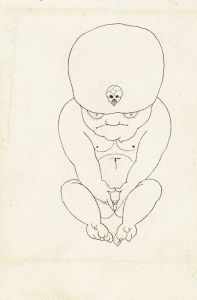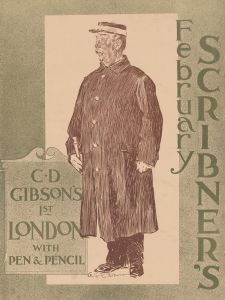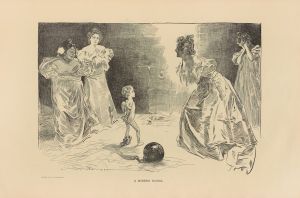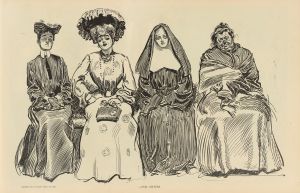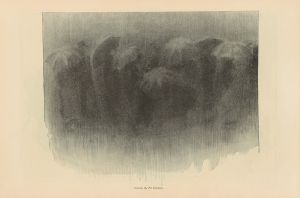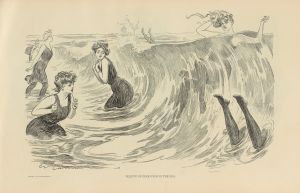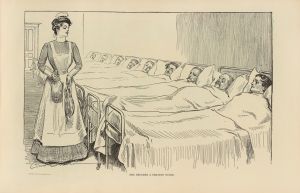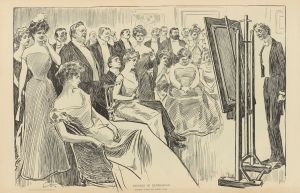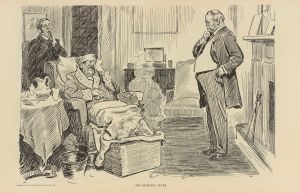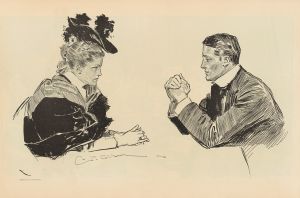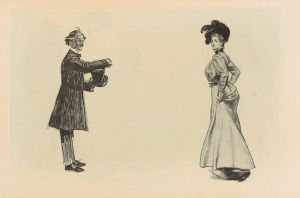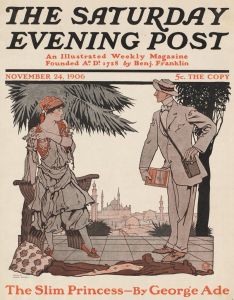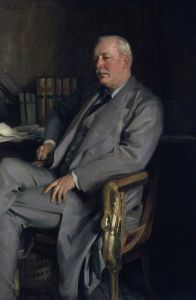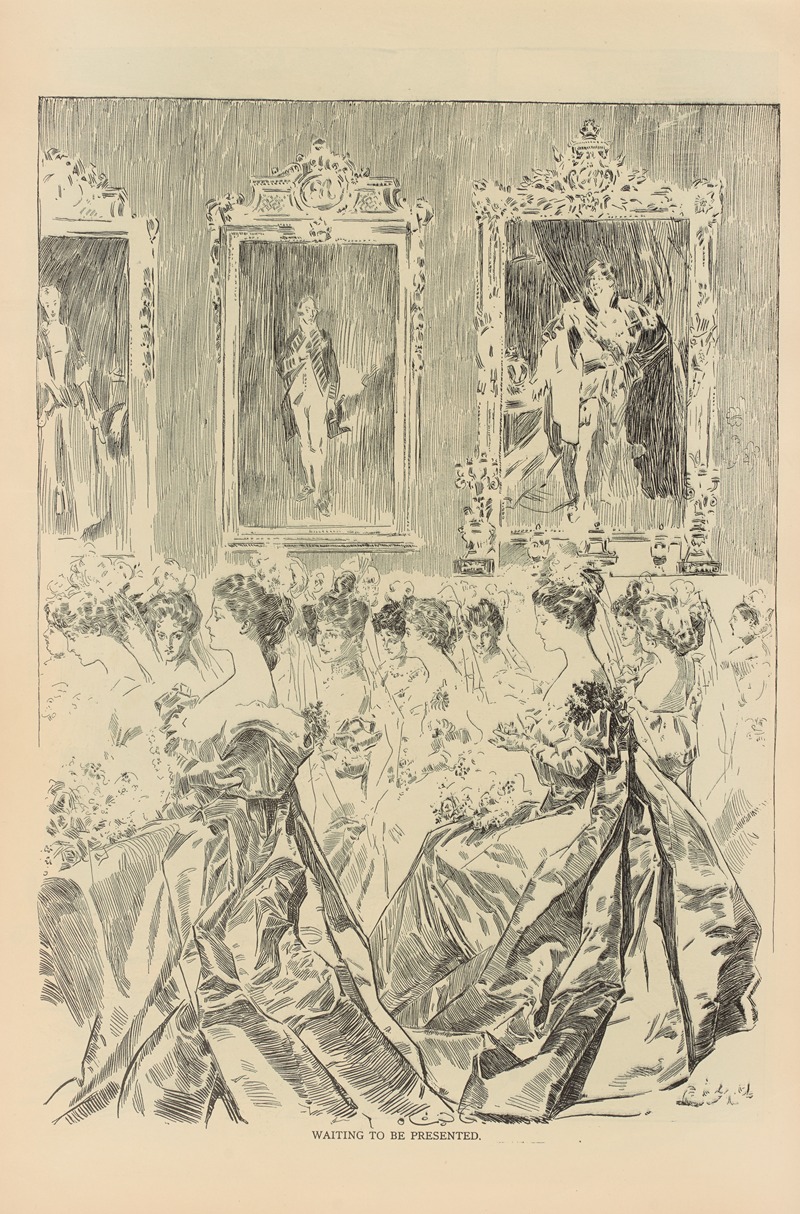
Waiting to be presented
A hand-painted replica of Charles Dana Gibson’s masterpiece Waiting to be presented, meticulously crafted by professional artists to capture the true essence of the original. Each piece is created with museum-quality canvas and rare mineral pigments, carefully painted by experienced artists with delicate brushstrokes and rich, layered colors to perfectly recreate the texture of the original artwork. Unlike machine-printed reproductions, this hand-painted version brings the painting to life, infused with the artist’s emotions and skill in every stroke. Whether for personal collection or home decoration, it instantly elevates the artistic atmosphere of any space.
Charles Dana Gibson was an influential American illustrator, best known for his creation of the "Gibson Girl," a representation of the idealized American woman at the turn of the 20th century. His work captured the spirit of the age and had a significant impact on the visual culture of the United States during that era. Among his numerous illustrations, "Waiting to be Presented" is one that reflects his keen eye for social commentary and his ability to capture the nuances of high society life.
"Waiting to be Presented" is a black-and-white illustration that showcases Gibson's signature style, characterized by its detailed line work and expressive figures. The image depicts a young woman, elegantly dressed, waiting in anticipation. The setting suggests a formal social event, possibly a debutante ball or a high-society gathering, where young women were traditionally presented to society. This was a common practice among the upper classes, symbolizing the transition of young women into adulthood and their eligibility for marriage.
Gibson's illustration captures the tension and excitement of such an occasion. The young woman's posture and expression convey a mix of eagerness and apprehension, reflecting the societal pressures and expectations placed upon women of her status. The attention to detail in her attire, from the intricate lace of her gown to the carefully styled hair, highlights the importance of appearance and social standing during this period.
The "Gibson Girl" was more than just a fashion icon; she represented a new, modern woman who was independent, confident, and socially active. While "Waiting to be Presented" does not explicitly feature the archetypal Gibson Girl, it embodies the themes and aesthetics associated with her. The illustration reflects the changing roles of women in society and the complexities of their social interactions.
Gibson's work was widely published in magazines such as Life, Harper's Weekly, and Scribner's, reaching a broad audience and influencing public perceptions of beauty and femininity. His illustrations were not just artistic expressions but also commentaries on the social dynamics of his time. "Waiting to be Presented" is a testament to his ability to blend art with social observation, capturing the essence of an era with elegance and insight.
Overall, Charles Dana Gibson's "Waiting to be Presented" is a significant piece that offers a glimpse into the societal norms and expectations of early 20th-century America. Through his masterful illustration, Gibson provides a window into the world of high society and the experiences of young women navigating their roles within it. His work continues to be celebrated for its artistic merit and its reflection of historical social trends.





